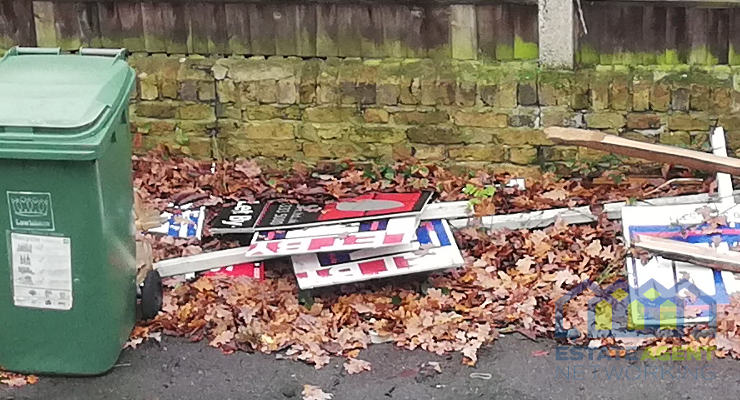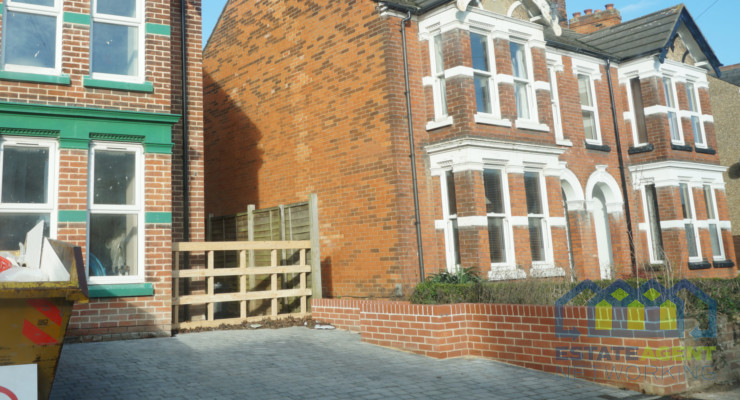Home hunter search areas expand in Britain’s most expensive regions
A tale of two markets: Home hunter search areas expand in Britain’s most expensive regions and stay local in the more affordable
-
The average UK homebuyer’s search radius has narrowed to 3.4 miles in 2025, a decrease from 4.3 miles in 2021 during the pandemic ‘search for space’
-
Home buyers in the South East and East of England are most likely to search further afield, with 35 per cent and 39 per cent respectively looking outside their immediate area at homes priced up to £60,000 less than where they live today
-
London buyers, particularly in areas like Uxbridge and Harrow, are actively widening their search for homes up to £290,000 below the cost locally
-
Homebuyers in northern England and the Midlands, especially in cities such as Liverpool and Bradford, largely search for properties within a five-mile radius, with seven in ten (70 per cent) staying local
-
In contrast, buyers in the most rural parts of the UK, including the Scottish Hebrides (where 90 per cent look over 10 miles away) and Llandrindod Wells (77 per cent), typically move further afield for lifestyle reasons
As affordability constraints remain front of centre for many UK home buyers, new analysis1 from Zoopla, one of the UK’s leading property websites, reveals a significant divide in property search behaviour. While the average UK buyer’s search radius has narrowed overall, buyers in southern regions are actively widening their search and looking further afield, with London-based buyers looking for homes that cost up to £200,000 less than where they live today.
The majority of UK homebuyers continue to search for properties close to home, with the average search radius narrowing to 3.4 miles in 2025, down from 4.3 miles in 2021 when the pandemic drove the ‘search for space’. This is further supported by government data from 2021-222, which showed that over half (51 per cent) of owner-occupiers who had moved within the last three years, stayed within five miles of their previous home.
However, this trend is not universal; a quarter (26 per cent) of all buyers are still looking for their next home beyond a 10 mile radius, highlighting a significant and growing segment of the market that is willing to move further afield for the right property
Southerners look further afield to get value for money
Buyers in the South East and East of England are the most likely to search for homes further afield. These regions have the highest share of buyers looking outside of their immediate area at 35 per cent and 39 per cent respectively looking at homes priced up to £60,000 below where they live today.
This is particularly true for buyers in popular commuter areas with strong links to London, such as St Albans, Stevenage, Hemel Hempstead, Luton, and Guildford, as well as in innovation hubs like Cambridge and Oxford. In all of these locations, over 40 per cent of buyers are searching for properties outside of their local area, driven by a desire for better value and more space.
Table 1: Buyer trends by region they live in today
|
Buyer’s region |
Avg. search distance (miles) |
% buyers looking >10miles (out of area) |
Price difference from where they live today (£)3 |
Price difference (%)
|
|
North East |
2.4 |
17% |
£ 20,000 |
15% |
|
Yorks’ & H |
2.5 |
16% |
£ – |
0% |
|
North West |
2.5 |
18% |
-£ 25,050 |
-13% |
|
E Midlands |
2.5 |
19% |
-£ 20,000 |
-10% |
|
W Midlands |
2.7 |
17% |
-£ 20,000 |
-9% |
|
South West |
3 |
28% |
-£ 40,050 |
-14% |
|
Wales |
3.1 |
20% |
-£ 15,000 |
-8% |
|
London |
4 |
28% |
-£ 200,000 |
-40% |
|
Scotland |
4.2 |
29% |
-£ 15,000 |
-9% |
|
South East |
4.3 |
35% |
-£ 59,950 |
-17% |
|
East |
5.4 |
39% |
-£ 60,050 |
-18% |
|
UK |
3.4 |
26% |
-£ 80,000 |
-25% |
Source: Zoopla Research 2025
For many buyers in southern England, expanding their search outside of their local area is driven by the desire for better value for money, especially as affordability remains a key constraint. Buyers here are willing to look further afield to secure a more affordable home with the price difference compared to where they live today varying significantly by region. For instance, buyers in the South West tend to look for homes priced £40,000 below the value of homes in their current location, while London-based buyers seek a much larger saving of up to £200,000.
The allure of a London postcode is increasingly being weighed against the compelling financial benefits of looking further afield. Those looking in Uxbridge are chasing significant savings of up to £220,000 (44 per cent), with 35 per cent of buyers looking 10 miles or more from their current location. Similarly, buyers in Harrow are seeking similar savings, around £220,000 (40 per cent) for a property further away but similar to that in their current location. Even in broader areas like North West London and North London, buyers are hunting for nearly half off, hoping for savings of around £290,000 (48 per cent) and £285,000 (49 per cent) respectively.
Table 2: Percentage of buyers by london postcode looking out of area
|
Postcode |
% buyers looking 10 miles+ |
Price difference from where they live today (£) |
Price difference(%) |
|
Croydon (CR) |
35% |
-£120,050 |
-28% |
|
Bromley (BR) |
35% |
-£150,000 |
-33% |
|
Uxbridge (UX) |
35% |
-£220,000 |
-44% |
|
Ilford (IG) |
33% |
-£150,000 |
-33% |
|
Harrow (HA) |
31% |
-£220,000 |
-40% |
|
South East London (SE) |
28% |
-£223,000 |
-43% |
|
Twickenham (TW) |
28% |
-£160,000 |
-33% |
|
East London (E) |
27% |
-£215,000 |
-40% |
|
North West London (NW) |
26% |
-£290,000 |
-48% |
|
North London (N) |
25% |
-£285,000 |
-49% |
|
Sutton (SM) |
24% |
-£185,000 |
-37% |
|
South West London (SW) |
19% |
-£425,005 |
-55% |
Source: Zoopla Research 2025. WC & EC postal areas excluded from analysis
Buyers in northern England more likely to search locally
In northern England and the Midlands, more home buyers search locally, reflecting the relative affordability of these regions. Seven in ten buyers in these areas search for their next home within a five-mile radius of their current one. This local focus is especially pronounced in some of the UK’s most affordable cities, with a high percentage of buyers in Liverpool (83 per cent), Bradford (83 per cent) and Hull (82 per cent) looking for properties within five miles. This suggests that buyers in more accessible markets are finding their preferred home without the need to compromise on location if they don’t have to.
Table 3: Area with the least out of area buyers
|
Buyer’s region |
Avg. House price |
Postal area |
Avg. house price |
% buyers enquiring 10 miles+ |
|
East Midlands |
£232,400 |
Leicester (LE) |
£257,300 |
14% |
|
Eastern |
£339,400 |
Norwich (NR) |
£263,400 |
28% |
|
London |
£536,300 |
South West London (SW) |
£722,200 |
19% |
|
North East |
£148,300 |
Newcastle upon Tyne (NE) |
£166,700 |
13% |
|
North West |
£204,100 |
Liverpool (L) |
£175,700 |
5% |
|
Scotland |
£170,500 |
Glasgow (G) |
£162,900 |
16% |
|
South East |
£386,700 |
Southampton (SO) |
£333,700 |
21% |
|
South West |
£313,500 |
Plymouth (PL) |
£250,700 |
16% |
|
Wales |
£209,100 |
Swansea (SA) |
£196,700 |
15% |
|
West Midlands |
£235,700 |
Stoke-on-Trent (ST) |
£189,000 |
12% |
|
Yorks’ & H |
£192,500 |
Bradford (BD) |
£168,700 |
11% |
Source: Zoopla Research 2025
Interestingly, while buyers in the North and Midlands tend to stay local, many are still actively seeking value. In the North West and Midlands, buyers are looking at homes where they could save around £20,000 to £25,000 by moving over ten miles away. This stands in stark contrast to the unique patterns in the North East and Yorkshire & the Humber, where buyers don’t appear to be seeking savings at all. In fact, buyers from the North East are enquiring about homes priced at a £20,000 premium compared to their current area, while those in Yorkshire & the Humber are looking at similarly priced properties.
However, the pattern of local searching is not universal across all less-expensive markets. The analysis also reveals that the most rural parts of the UK have an above-average share of those looking to move out of the area. In the Scottish Hebrides, 90 per cent of those looking to move look 10 miles or more away from their current home, the largest percentage in the UK. This is followed by Llandrindod Wells in Wales (77 per cent), Salisbury in the South West (57 per cent) and St Albans (48 per cent). This is most likely driven by a combination of factors, including lifestyle changes, such as new working patterns that make commuting less of a constraint and the desire for better access to amenities like schools and hospitals.
Table 4: Area with the most out of area buyers
|
Buyer’s region |
Avg. House price |
Postal area |
Avg. house price |
% buyers enquiring 10 miles+ |
|
East Midlands |
£232,400 |
Northampton (NN) |
£262,100 |
35% |
|
Eastern |
£339,400 |
St Albans (AL) |
£517,000 |
48% |
|
London |
£536,300 |
Croydon (CR) |
£400,100 |
35% |
|
North East |
£148,300 |
Durham (DH) |
£142,300 |
30% |
|
North West |
£204,100 |
Lancaster (LA) |
£221,100 |
44% |
|
Scotland |
£170,500 |
Hebrides (HS) |
£159,900 |
90% |
|
South East |
£386,700 |
Hemel Hempstead (HP) |
£453,200 |
46% |
|
South West |
£313,500 |
Salisbury (SP) |
£342,000 |
57% |
|
Wales |
£209,100 |
Llandrindod Wells (LD) |
£261,300 |
77% |
|
West Midlands |
£235,700 |
Hereford (HR) |
£296,000 |
41% |
|
Yorks’ & H |
£192,500 |
Harrogate (HG) |
£339,200 |
44% |
Source: Zoopla Research 2025
Richard Donnell, Executive Director at Zoopla, comments:
“Home buying decisions and search patterns are being reshaped by the affordability of housing. The old adage that most people move within five miles of where they live today is being challenged, especially for those wanting to live in southern England where housing costs are greatest.
“More home buyers are looking further afield in search of better value for money so today’s home buyers need more tools and insights to help them plan their next move. Our search experience empowers consumers by allowing them to draw their own custom search areas on a map, giving them complete control over their property hunt. Additionally, our innovative travel time calculator helps buyers understand exactly how far they could live from their workplace while remaining within a reasonable commuting distance, taking the guesswork out of balancing affordability with convenience.







